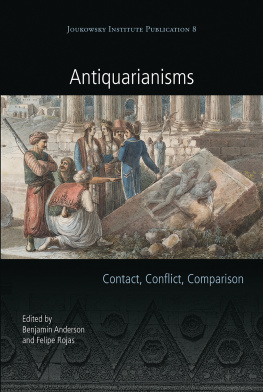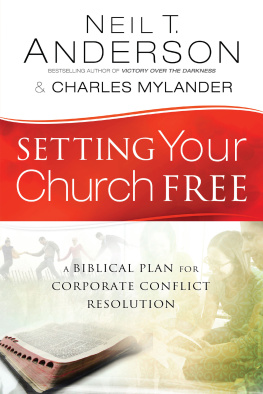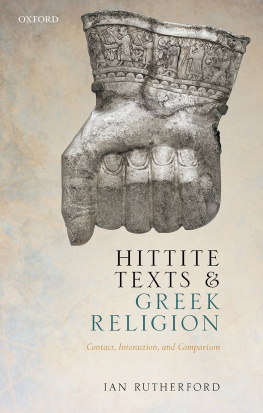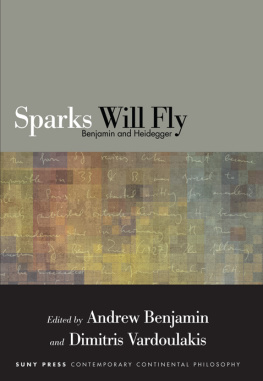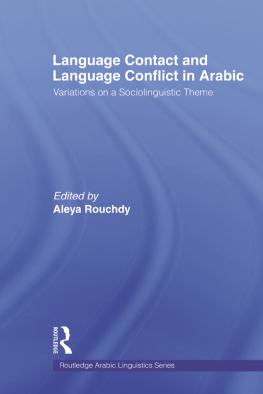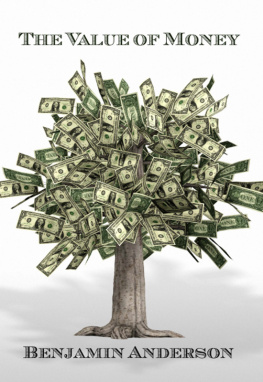Anderson Benjamin - Antiquarianisms: contact, conflict, comparison
Here you can read online Anderson Benjamin - Antiquarianisms: contact, conflict, comparison full text of the book (entire story) in english for free. Download pdf and epub, get meaning, cover and reviews about this ebook. City: Oxford, year: 2017, publisher: Oxford University Press, genre: Romance novel. Description of the work, (preface) as well as reviews are available. Best literature library LitArk.com created for fans of good reading and offers a wide selection of genres:
Romance novel
Science fiction
Adventure
Detective
Science
History
Home and family
Prose
Art
Politics
Computer
Non-fiction
Religion
Business
Children
Humor
Choose a favorite category and find really read worthwhile books. Enjoy immersion in the world of imagination, feel the emotions of the characters or learn something new for yourself, make an fascinating discovery.
- Book:Antiquarianisms: contact, conflict, comparison
- Author:
- Publisher:Oxford University Press
- Genre:
- Year:2017
- City:Oxford
- Rating:3 / 5
- Favourites:Add to favourites
- Your mark:
- 60
- 1
- 2
- 3
- 4
- 5
Antiquarianisms: contact, conflict, comparison: summary, description and annotation
We offer to read an annotation, description, summary or preface (depends on what the author of the book "Antiquarianisms: contact, conflict, comparison" wrote himself). If you haven't found the necessary information about the book — write in the comments, we will try to find it.
Antiquarianisms: contact, conflict, comparison — read online for free the complete book (whole text) full work
Below is the text of the book, divided by pages. System saving the place of the last page read, allows you to conveniently read the book "Antiquarianisms: contact, conflict, comparison" online for free, without having to search again every time where you left off. Put a bookmark, and you can go to the page where you finished reading at any time.
Font size:
Interval:
Bookmark:

A NTIQUARIANISMS
Joukowsky Institute Publications
KOINE: Mediterranean Studies in Honor of R. Ross Holloway
Edited by Derek Counts and Anthony Tuck
Re-Presenting the Past: Archaeology through Text and Image
Edited by Sheila Bonde and Stephen Houston
Locating the Sacred: Theoretical Approaches to the Emplacement of Religion
Edited by Claudia Moser and Cecelia Feldman
Violence and Civilization: Studies of Social Violence in History and Prehistory
Edited by Roderick Campbell
Of Rocks and Water: Towards an Archaeology of Place
Edited by mr Harmanah
Archaeologies of Text: Archaeology, Technology, and Ethics
Edited by Matthew T. Rutz and Morag Kersel
Archaeology for the People: Joukowsky Institute Perspectives
Edited by John F. Cherry and Felipe Rojas
C ONTACT , C ONFLICT , C OMPARISON
edited by
Benjamin Anderson and Felipe Rojas

Joukowsky Institute Publication 8
General series editor: Prof. John F. Cherry
Joukowsky Institute for Archaeology and the Ancient World
Brown University, Box 1837/60 George Street, Providence, RI 02912, USA
Published in the United Kingdom in 2017 by
OXBOW BOOKS
The Old Music Hall, 106-108 Cowley Road, Oxford, OX4 1JE
and in the United States by
OXBOW BOOKS
1950 Lawrence Road, Havertown, PA 19083
Published by Oxbow Books on behalf of the Joukowsky Institute
Brown University, Oxbow Books and the individual contributors 2017
Paperback Edition: ISBN 978-1-78570-684-4
Digital Edition: ISBN 978-1-78570-685-1 (epub)
Mobi Edition: ISBN 978-1-78570-686-8 (epub)
A CIP record for this book is available from the British Library
All rights reserved. No part of this book may be reproduced or transmitted in any form or by any means, electronic or mechanical including photocopying, recording or by any information storage and retrieval system, without permission from the publisher in writing.
For a complete list of Oxbow titles, please contact:
| UNITED KINGDOM | UNITED STATES OF AMERICA |
| Oxbow Books | Oxbow Books |
| Telephone (01865) 241249 | Telephone (800) 791-9354 |
| Fax (01865) 794449 | Fax (610) 853-9146 |
| Email: | Email: |
| www.oxbowbooks.com | www.casemateacademic.com/oxbow |
Oxbow Books is part of the Casemate Group
Front cover: Detail of Louis-Franois Cassas, view of the Acropolis of Athens from the Temple of Olympian Zeus (see ). Suna and nan Kra Foundation Orientalist Paintings Collection, Pera Museum, Istanbul.
Most of the essays collected in this volume developed from presentations at a symposium, Antiquarianisms Across the Atlantic, which was held at Brown University on November 1314, 2015. We wish to thank the Joukowsky Institute for Archaeology and the Ancient World, the John Carter Brown Library, and the Department of Egyptology and Assyriology, as well as their respective directors and chair, Peter van Dommelen, Neil Safier, and John Steele, for sponsoring the symposium. We would also like to thank Susan Alcock, former director of the Joukowsky Institute, for her enthusiastic encouragement during the early stages of the project; and Sarah Sharpe, Jessica Porter, and Brenda De Santiago for their expert organizational help during the event.
For adopting this volume in the Joukowsky Institute Publications, and for his advice and editorial savvy, we extend our gratitude to the General Series Editor, John Cherry. A subvention for color printing was supplied by the Fund for Ancient Art of the Cornell University Department of Classics, and the index was prepared by Ayla evik, with funding from Cornells Department of the History of Art and Visual Studiesour thanks to all. Finally, we thank all symposium participantsspeakers, moderators, and audience membersand volume contributors for their open-minded engagements with a still-developing discourse.
3.1 Fragments of an incense burner on the surface of an Anj site (sixteenth to eighteenth century A.D.) pointed out to us by a Datsin (authors photograph).
3.2 Test-pitting in a Gumuz village (authors photograph).
3.3 Inside the ritual house of Adam Yeme, a Sith Swala. Left of the ritual specialist there are several ancient artifacts on display, including a hippopotamus tail used as a drumstick (authors photograph).
3.4 Interviewing Itafa Fido, an old Busase with a deep knowledge of the history of his people (authors photograph).
5.15.2 Two views of the Ozymandias in the Texas desert, a ruin that artists and travelers from antique lands alike have painted and decorated (often with socks) since the monuments installation. (bottom): 2011 (NICHOLAS HENDERSON/FLICKR [CREATIVE COMMONS]).
5.3 The Ponce monolith provides an example of the stone figures of Tiahuanaco. In the early colonial era, some authors mixed indigenous and Spanish tropes of origins to tell of an original species of humans whom the creator deity had turned to stone because of their sins (photograph by John Janusek, used with permission).
5.4 Photographs of Inca wakas , which could be modified environmental features such as rock outcrops or water sources (pictured here, major Inca origins wakas at Lake Titicaca [left] and the volcanic rock of Puma Urco in Cusco [right], authors photographs), or unaltered things such as trees or corn cobs ( mamazara ) (not pictured).
5.5 Ollantaytambo, an extensive Inca urban landscape and agricultural system (authors photograph).
5.6 The boulder of Hatun Kancha at Pachar personified the Inca ruler Mama Ocllo. Large Inca buildings and walls adjoined the boulder, demarcating the space of the waka (authors photographs).
5.7 View from the mountaintop of Huanacauri toward the city of Cusco. The Incas recognized this place as a sacred and ancient site where their ancestors first saw, appropriated, and then founded their capital (authors photograph).
5.8 Huanacauri is divided into two sectors. Sector A (top left) features a large plaza and was likely used for theatrical feasting and beer ( chicha ) drinking ceremonies. Sector B features a jagged boulder waka enclosed within a zig-zag wall (authors photographs).
5.9 Our 2014 excavations (which are ongoing) in Sector A revealed a dense layer of chicha service and fermentation vessels broken in situ and covered with ash from the burnt roof, as well as a thin layer of red clay (authors photograph).
5.10 Excavations at Huanacauri revealed the practices by which Spaniards and Andeans put this waka to death in 1536. In the building pictured here, test excavations revealed a sequence of decommissioning, including: a false threshold (a line of rocks that closed off the doorway) (top); a smashed chicha storage vessel with a burnt guinea pig offering ( cuy ) (middle); and the original, burnt threshold of the door (bottom). The excavations found evidence for similar sequences in three other buildings of the site, revealing that Andean people participated in or directed the destruction of the Inca waka (authors photographs).
6.1 Boban Aztec Calendar Wheel (c. 15451546). Ink and colors on amatl fiber (35 cm 38.1 cm). Codex Ind 42, The John Carter Brown Library, Providence, RI (Courtesy of the John Carter Brown Library at Brown University).
6.2 View of the Pyramid of Cholula, near Mexico. Ink on paper (21.6 cm 12.5 cm). From Alexander von Humboldt, Researches, Concerning the Institutions & Monuments of the Ancient Inhabitants of America ... (London: Longman, Hurst, Rees, Orme & Brown, J. Murray & H. Colburn, 1814), vol. 1, following p. 80. J814 H919r, The John Carter Brown Library, Providence, RI (Courtesy of the John Carter Brown Library at Brown University).
Next pageFont size:
Interval:
Bookmark:
Similar books «Antiquarianisms: contact, conflict, comparison»
Look at similar books to Antiquarianisms: contact, conflict, comparison. We have selected literature similar in name and meaning in the hope of providing readers with more options to find new, interesting, not yet read works.
Discussion, reviews of the book Antiquarianisms: contact, conflict, comparison and just readers' own opinions. Leave your comments, write what you think about the work, its meaning or the main characters. Specify what exactly you liked and what you didn't like, and why you think so.


